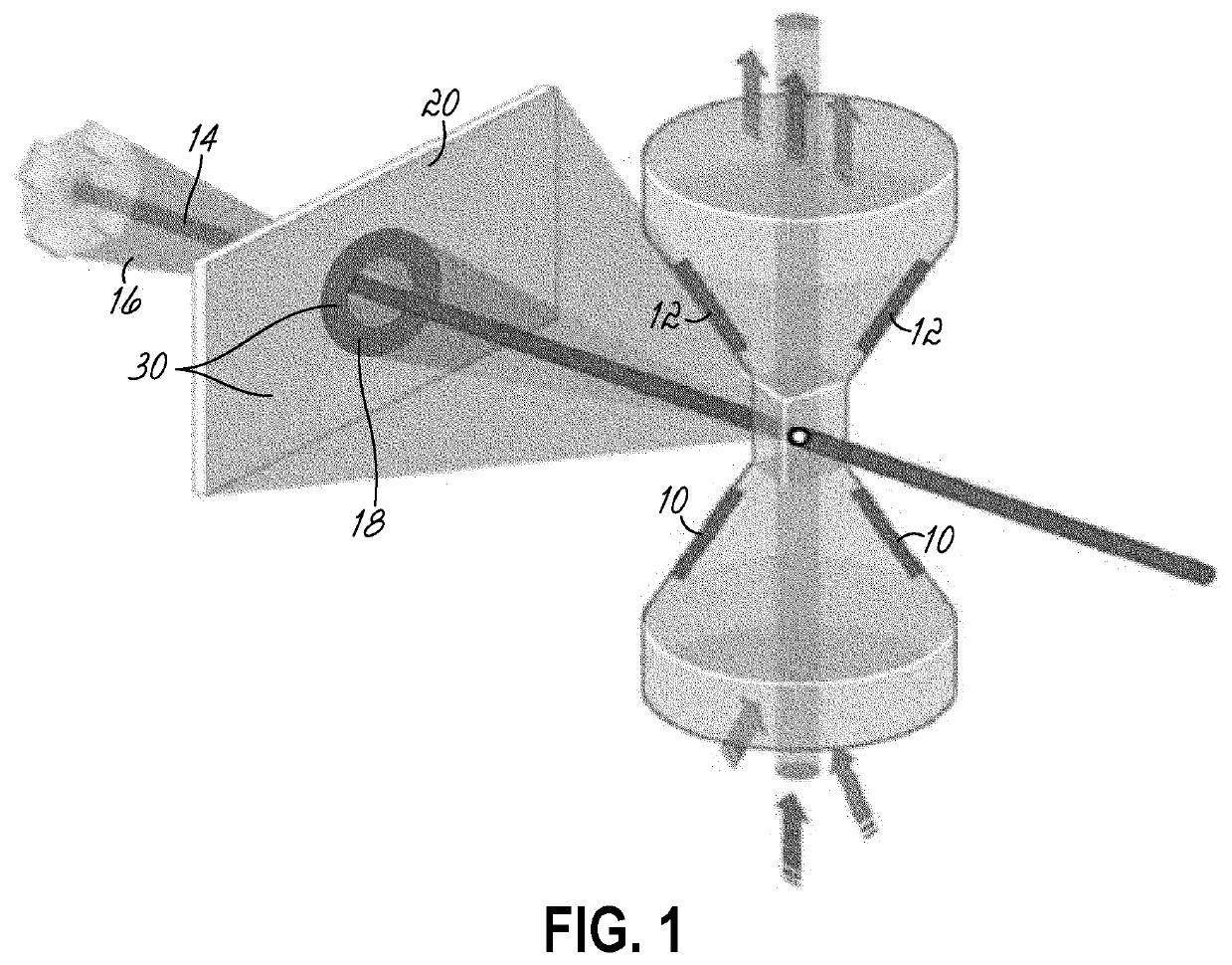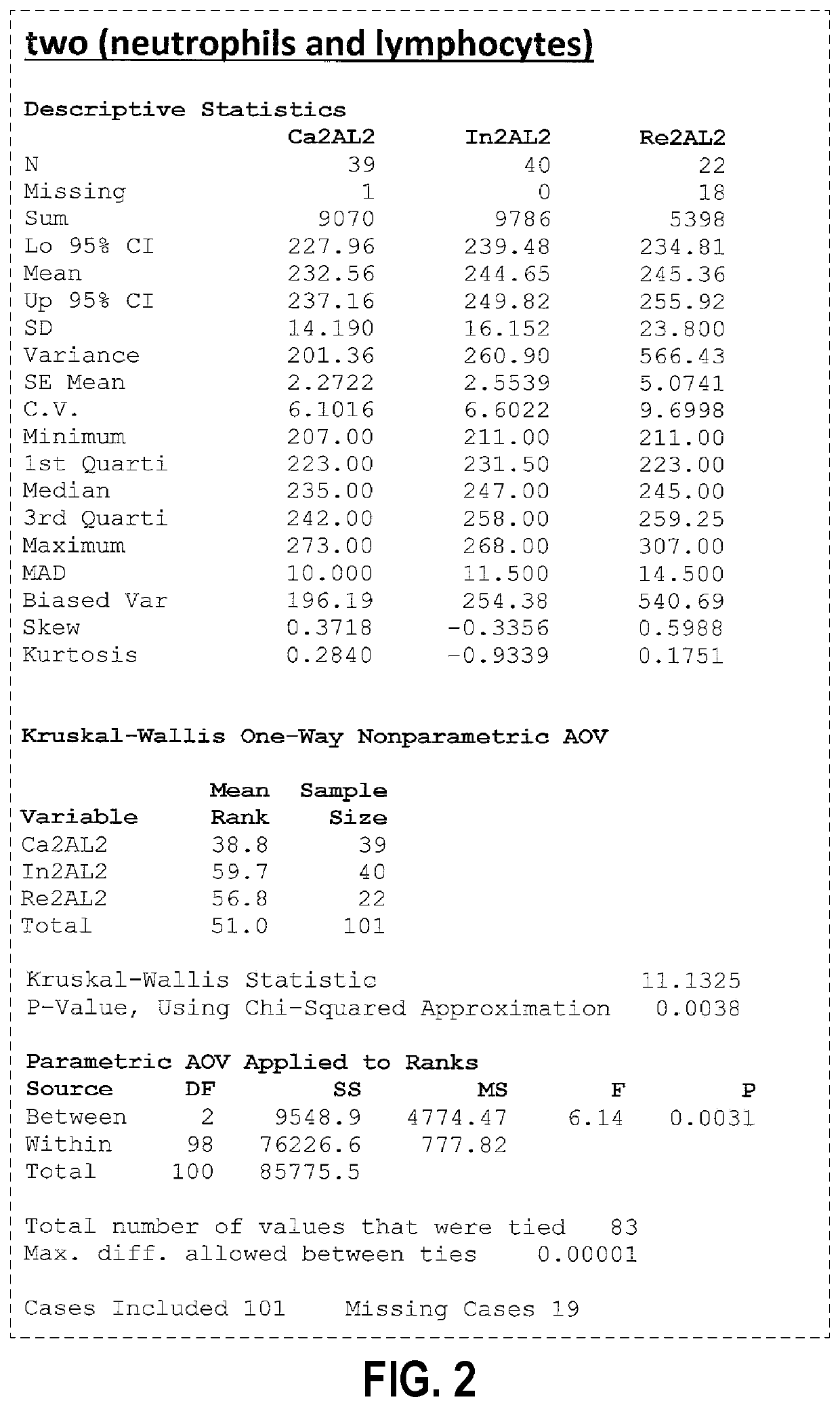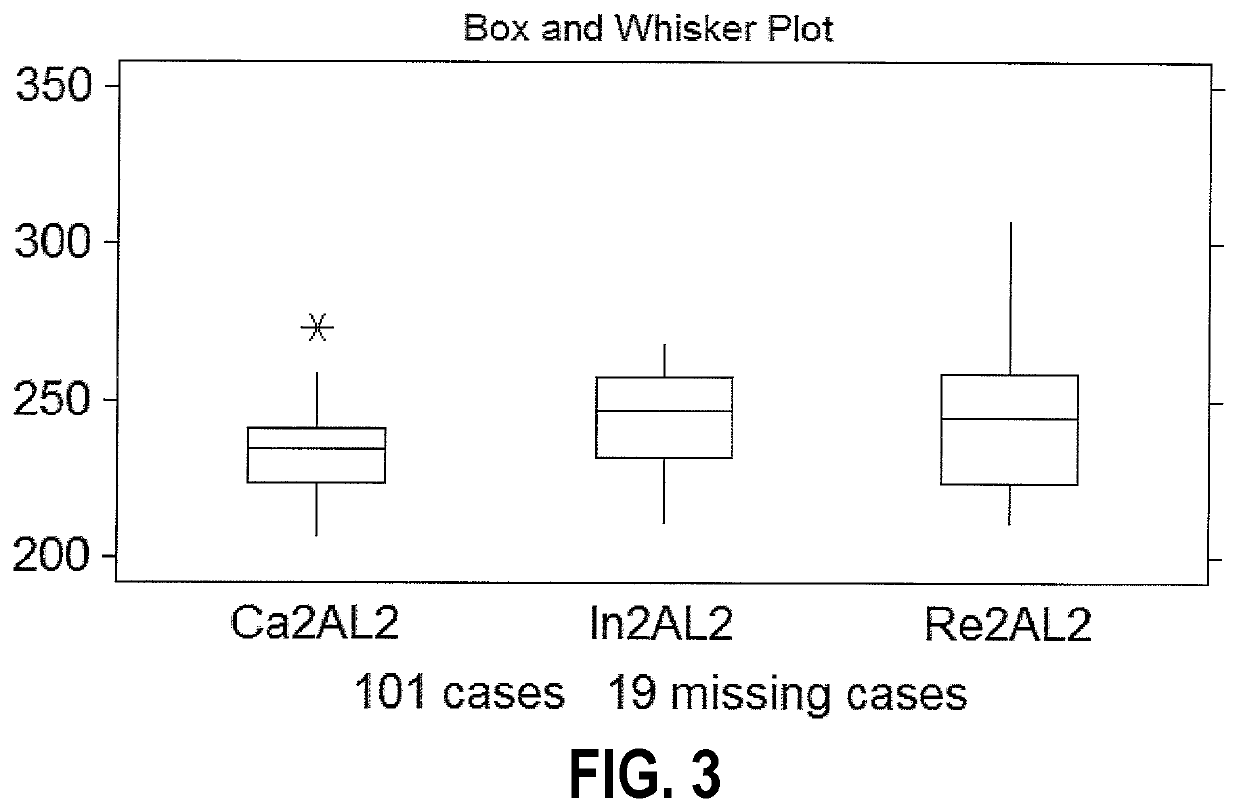Methods of diagnosing Clostridium difficile infection or recurrence in a subject
a technology of clostridium difficile and clostridium difficile, which is applied in the field of methods of diagnosing i > clostridium difficile /i > infection or recurrence in a subject, can solve the problems of not being as sensitive, taking 24-48 hours to obtain, and costing the health care system between 1-3 billion dollars annually. , to achieve the effect of improving accuracy, reliability and speed
- Summary
- Abstract
- Description
- Claims
- Application Information
AI Technical Summary
Benefits of technology
Problems solved by technology
Method used
Image
Examples
Embodiment Construction
[0030]An embodiment of the present invention allows stratification using a CBC of patients who are positive for C. diff. infection (CDI+) from CDI negative patients using a Coulter counter. FIG. 1 is a schematic diagram of the light angle collected using a Coulter system. The Coulter counter includes a lower electrode 10, an upper electrode 12, as well as detectors for axial light loss 14, low angle light scatter 16, lower median angle light scatter between 10 and 20 degrees (LMALS) 18, upper median angle light scatter between 20 and 42 degrees (UMALS) 20, and a fifth light scatter channel 30 that is the sum of the UMALS and the LMALS regions.
[0031]In accordance with aspects of this invention, the same tube of blood drawn for a standard of care CBC (complete blood count), which most hospital patients have drawn to assess their status in the hospital, may be used for sample analysis. Otherwise it is a simple blood draw such as collected in one purple 3 ml tube. For hospital patients,...
PUM
| Property | Measurement | Unit |
|---|---|---|
| median angle light scatter | aaaaa | aaaaa |
| median angle light scatter | aaaaa | aaaaa |
| median angle light scatter | aaaaa | aaaaa |
Abstract
Description
Claims
Application Information
 Login to View More
Login to View More - R&D
- Intellectual Property
- Life Sciences
- Materials
- Tech Scout
- Unparalleled Data Quality
- Higher Quality Content
- 60% Fewer Hallucinations
Browse by: Latest US Patents, China's latest patents, Technical Efficacy Thesaurus, Application Domain, Technology Topic, Popular Technical Reports.
© 2025 PatSnap. All rights reserved.Legal|Privacy policy|Modern Slavery Act Transparency Statement|Sitemap|About US| Contact US: help@patsnap.com



